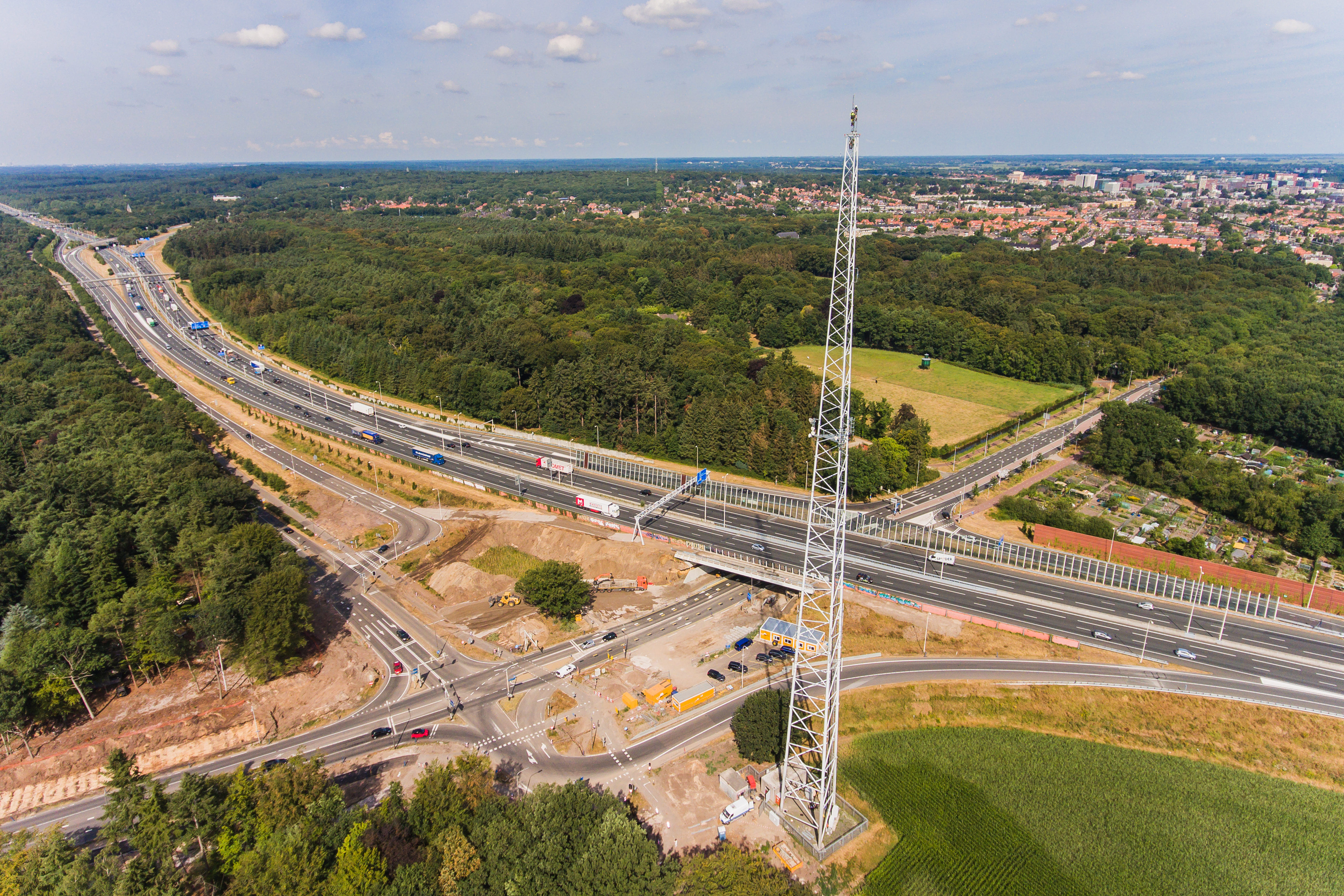
Digital terrestrial television upgrade
Follow your favourite series anywhere and with the best image quality. Watch football as though you’re there. And everything just over the air. With Digitenne (digital terrestrial television or DTTV), KPN is the first provider in the Netherlands to convert the full range of channels to Full HD 1080P, without an internet connection. VolkerWessels Telecom provides the necessary replacement or upgrade of equipment at 53 broadcasting locations. A challenging project. Turnkey, including ten years' maintenance.
Replacement of broadcasting systems
It towers proudly over Rotterdam. At 207 metres, the mast in Waalhaven is the tallest free-standing mast in the Netherlands. The 31st floor, the last landing under the antenna, is home to one of the 53 Digitenne project sites. Shiny copper pipes, thick cables and green backlit displays. The view is pretty impressive, but so too is the transmitter room. “Completely new,” says project leader Lars Maris proudly, pointing out the equipment in the racks. “We’re doing this at 22 locations. The other 31 sites will be upgraded.”

From DVB-T to DVB-T2
With the conversion, the outdated broadcast standard DVB-T makes way for DVB-T2. “A real special,” says a confident Lars. “The last DBV-T new-build dates back at least ten years. The choice between upgrading or building something new depends mainly on the age and condition of the equipment. As for sites where transmitters have been replaced in the meantime, our colleagues only have to do an upgrade. But at locations like here in Rotterdam, they replace the complete broadcasting systems: “The equipment has become much more compact. It means cutting transmitter units from six to two. That makes a huge difference in consumption and surface area, and so operating expenses.” VolkerWessels Telecom is also replacing air cooling with liquid cooling almost everywhere.
Temporary transmitter container
Most locations are spacious enough to place the new station next to the old one. After building, filling, programming and testing the system, the site goes live and the signal is transferred overnight. The old transmitter units can then be disconnected. “An ideal working method,” says Lars. “But unfortunately not everywhere.” In addition to the towers, there are ‘container locations’. Sites where the equipment stands in smaller buildings next to a separate mast. There isn’t enough room there to build the new transmitter units next to the old transmitter cabinets. The smart solution? “A mobile container, ready-to-use with all the equipment. We place these next to or sometimes even on top of the building to temporarily take over the signals. This gives us the opportunity to make room for the new transmitters by demolishing the old ones. As soon as the new cabinets are in place and the system is up and running, the container can be removed.”
Technical freedom
What was technically the best option, also with a view to ten years of maintenance? “Usually your client has technical requirements, but this time we were freer in our approach and possibilities,” says Lars. “For the upgrade locations though, we were bound by the existing equipment.” The lead time of the project also caused people to frown at first. Upgrade or convert 53 locations within one year? That’s an ambitious plan. “But we did it,” Lars says with a smile. ‘Stick to the plan’ was our motto. As far as we’re concerned, this project is a real showpiece and we of course celebrate that with the entire team.”
Replacement of combiners
The good result didn’t go unnoticed. In 2019, the team is allowed to continue with phase 2: replacing the combiners at the 53 Digitenne locations. “For the future roll-out of 5G, among other things, the frequency at which Digitenne is now broadcasting must be freed up. That’s why we’re replacing the combiners. We now know exactly what to expect at the locations, so we’re looking forward to this sequel!”